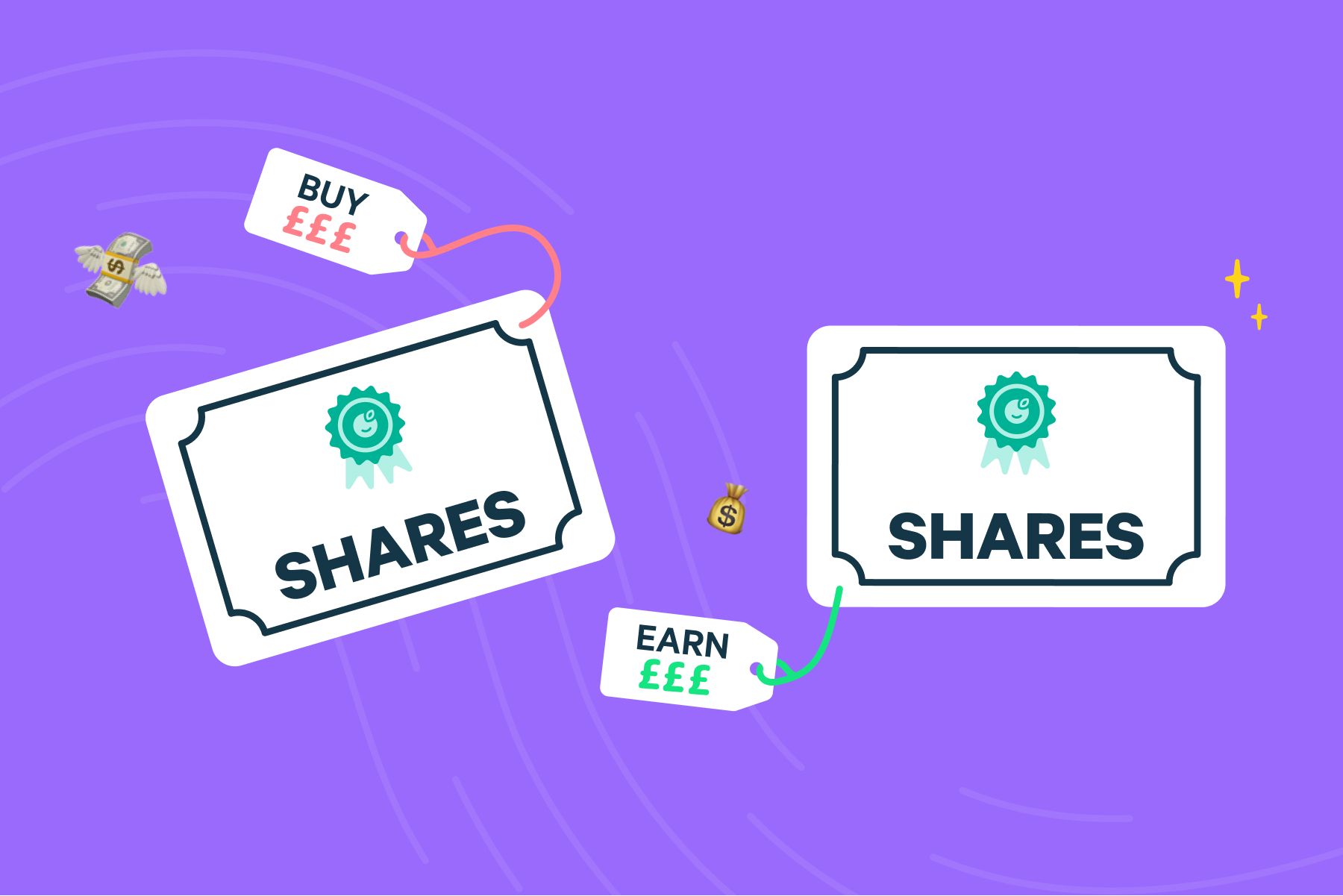What is the The P/E Ratio used for?
The Price to Earnings ratio, aka P/E ratio, is a simple way to calculate the value (rather than the price) of shares on the stock market. Ultimately, the P/E ratio is a tool used for working out the best place to invest money 💰
The basic definition of the P/E ratio, or price-to-earnings ratio, is the current share price of a company, divided by the Earning per Share, or EPS.
P/E ratio = Share Price ÷ EPS (Earning per share)
Already confused? 😕 No worries, we’ll break it down c o m p l e t e l y.
Let’s start with the share price. This is simply the price of a company's stock. If you’re not entirely sure what shares are, a great place to start is our earlier article. In essence, shares are a percentage of a business that you can buy and own, meaning you have access to a share of that business’s earnings 💸
What is Earnings per Share (EPS)?
The Earnings per Share, or EPS, is the company's earnings (an average over the last 12 months), divided by the total number of shares of that company.
Earnings here is just another word for profit, or how much money the company has made over a specific period. So the EPS will tell you how much money the company has made... in relation to the size of the pie you must share with the other investors in that same business 🥧
For example, say you owned a hairdressers that made £6,000 last year and has 1000 shares, the EPS will be £6,000 ÷ 1000, or £6.
What is the Price to Earnings Ratio or P/E Ratio?
So BASICALLY the P/E ratio is telling us the cost of shares divided by the profit the shareholder will be able to benefit from.
To continue with our hairdressers example 💇 We now already know that the EPS is £6. If the price of each share is set at £60, then to calculate the P/E ratio we would divide £60 by £6, which gives us a P/E ratio of 10.
Forward P/E ratios 👉 vs Trailing P/E ratios 👈
Another important classification that you'll often hear investors making, is the difference between trailing P/E ratios and forward P/E ratios.
Trailing P/E ratios are what we've been talking about so far in this article. The trailing P/E ratio is based on the current earnings of the company (or at least an approximation, based on performance over the last 12 months) 📅
In comparison, the forward P/E ratio is based on the company's prediction of future earnings 📈 This means the forward P/E ratio can factor in the anticipated growth of a company when assessing the investment opportunity.
However, because the forward P/E ratio is based on a company's estimate, there could be a potential conflict of interest. Companies could overestimate or underestimate their growth prospects, and so the price-earnings ratio could sometimes be misleading if simply taken on face value.
Because the trailing P/E ratio is based on the reported earnings from the last 12 months, the metric could be considered more reliable in this regard.
It's more common to use the trailing P/E ratio, as it's seen as more objective (assuming the company has reported their earnings truthfully!). BUT… the trailing price-earnings ratio is not without its own faults. To use the investments mantra... past performance is not an indicator of future performance! 😏
Value vs Price: why you need the P/E ratio
In isolation, and out of context, the price-earnings ratio is of limited use. But what it offers is a consistent means of comparing the value of stock (as opposed to just its price), that can be used from one business to another.
To take a real world example; say you’re a savvy shopper, and you find a pair of designer jeans in your local charity shop. The price of the jeans is around £5, but you know that the real value to be much higher. By buying the jeans you’re getting a good deal, because the price is lower than the value.
In a similar way, the price of stocks can differ to their actual value. By which we mean the cost you may be able to buy them for could be very different to the potential earnings you might be able to derive from them.
The P/E ratio helps investors to act as ‘savvy shoppers’ within the stock market, letting them calculate whether they’re getting a good price for stocks. It does this by dividing the price by the earnings the stocks will yield.
Shopping the stock market, what makes a good P/E ratio?
If we calculate the P/E ratio we are left with a number….but what next?
Generally investors tend to look for stock with a low P/E ratio. These stocks are thought to be undervalued, and so by buying them up at a bargain price investors can get a good return on their money 💚
Meanwhile, stocks with a high price to earnings ratio may be overpriced (i.e. the stock price is high in relation to its earnings), and so it could represent a bad investment in terms of risk vs reward.
Great, I’ve mastered the stock market, time to get rich! 🤑
Not so fast! While the calculation of P/E ratios can be a helpful tool to use, the application of this metric requires some interpretation.
The price to earnings ratio is just one way to look at the value of stock. Before investing, it's important to take in other factors, like the dividend paid on stock, the amount of debt a company has, or the level of risk when investing.
Also, average P/E ratios will differ from industry-to-industry, so it’s crucial that this is also accounted for when comparing the P/E ratios of businesses.
Ultimately, it’s just too simplistic to say that stocks with a lower P/E ratio are always good, and those with a higher P/E ratio are always bad.
Low P/E ratios could be a good sign, but they could indicate that the earnings of a company are expected to fall (making the investment less profitable) 📉
Likewise while a high P/E ratio might indicate that the current stock of a company is overpriced, it may also suggest that the business anticipates future earnings growth, meaning investors will get higher profits for their shares.
Seems complicated? Let Plum help you out!
If all this talk of price-earnings ratios has got you completely turned off the prospect of investing, why not consider Plum 💜
Plum provides a range of carefully curated and professionally managed investment funds for you to choose from. Once you’ve picked the funds you want, we can invest for you automatically, taking the hassle out of the process.
Bear in mind, as with all investing, your capital is at risk.
If you'd like to learn more about Plum then you can check out our website.
Download PlumFor all the latest Plum news and discussion, keep an eye on our Facebook group, Plum Squad, or follow us on Instagram and Twitter.

